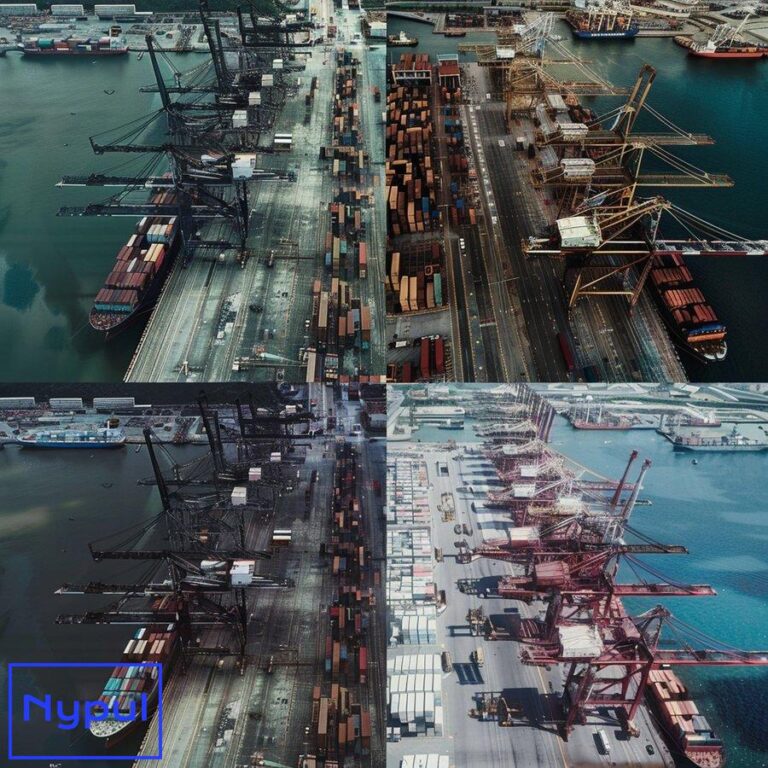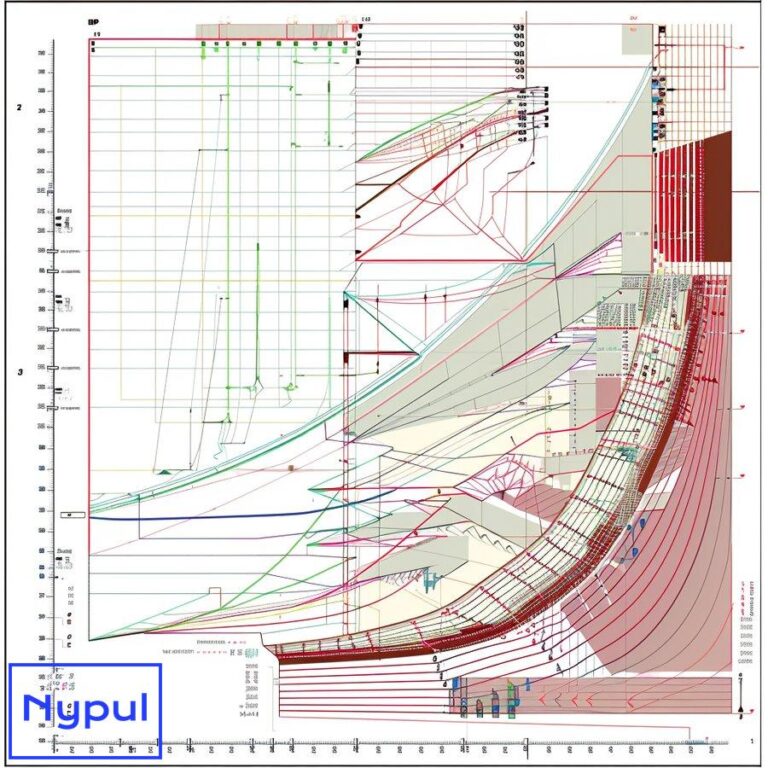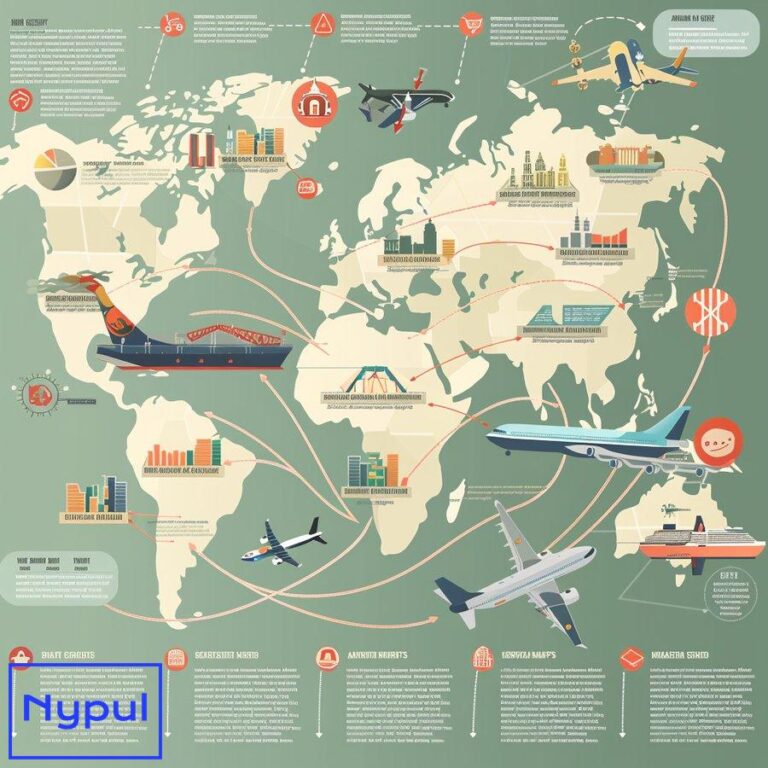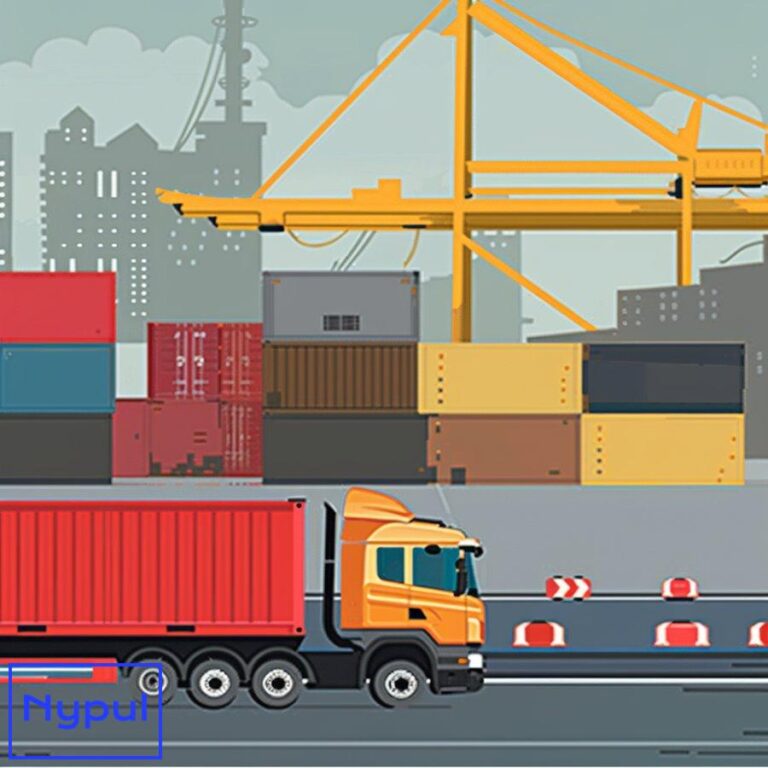What Year Are Trucks Allowed in California Ports
What are the current truck age requirements for California ports?
California ports have implemented strict age requirements for trucks entering their facilities as part of ongoing efforts to reduce air pollution and improve air quality in surrounding communities. These requirements have evolved over time, becoming increasingly stringent.
As of 2024, all drayage trucks entering California ports must be model year 2014 or newer. This requirement applies to trucks registering in the Port Drayage Truck Registry (PDTR) for the first time. Trucks already registered can continue operating as long as they meet emission standards set by the California Air Resources Board (CARB) and are current on annual dues.
The Port of Los Angeles and Port of Long Beach, which handle over a third of all containerized imports to the United States, have been at the forefront of implementing these regulations. Their Clean Truck Program, established in 2008, has successfully reduced air pollution from harbor trucks by more than 90%.
Key points about current truck age requirements:
Model year requirement: Trucks must be 2014 or newer to register for the first time in the PDTR.
Existing registrations: Trucks already registered can continue operating if compliant with CARB emission regulations.
Clean Truck Program success: The program has significantly reduced diesel particulate emissions (87%), sulfur dioxide (97%), and nitrogen oxide emissions (58%).
Compliance verification: Trucks must be registered in the Truck Regulations Upload, Compliance, and Reporting System (TRUCRS) to conduct drayage activities in California.
These age requirements are part of a broader strategy to transition to zero-emission trucks by 2035. The regulations aim to balance environmental goals with the economic realities of the trucking industry, recognizing the vital role that drayage operations play in California’s economy.
For truck owners and operators, staying informed about these requirements is crucial. Regular checks of the CARB website and port authority announcements can help ensure compliance and avoid potential fines or operational disruptions.
How will truck requirements change in California ports by 2035?
California ports are set to undergo a significant transformation in truck requirements by 2035, driven by ambitious environmental goals and regulations. The state aims to achieve 100% zero-emission drayage trucks by this target year, a goal that will reshape the trucking industry serving these vital trade hubs.
Key changes and milestones:
2024 – New registration restrictions: Beginning January 1, 2024, only zero-emission drayage trucks may be newly registered in the TRUCRS system. This marks a critical shift towards cleaner technologies.
2027 – Increased zero-emission purchases: State and local government fleets must ensure 100% of their truck purchases are zero-emission vehicles starting January 1, 2027.
2035 – Full zero-emission requirement: All drayage trucks entering seaports and intermodal railyards will be required to be zero-emission by this date.
These changes are part of the Advanced Clean Fleets (ACF) regulation approved by CARB on April 28, 2023. The regulation aims to accelerate the adoption of zero-emission vehicles in medium and heavy-duty fleets, including those serving ports.
Impact on different fleet types:
| Fleet Type | Key Requirements |
|---|---|
| State and Local Government | 50% ZEV purchases by 2024, 100% by 2027 |
| Drayage Trucks | Only ZEV registrations from 2024, all ZEV by 2035 |
| High Priority Fleets | ZEV additions from 2024, removal of older ICE vehicles from 2025 |
The transition to zero-emission trucks is expected to bring significant environmental benefits. These include reduced particulate matter (PM), oxides of nitrogen (NOx), and greenhouse gas (GHG) emissions. This shift will particularly benefit communities near ports, many of which are environmental justice areas that have long borne the brunt of air pollution from port activities.
For truck owners and fleet operators, these changes necessitate careful planning and investment. The shift to zero-emission vehicles requires not only new truck purchases but also infrastructure development for charging or refueling. While challenging, this transition also presents opportunities for early adopters to gain a competitive edge in an evolving market.
Ports are actively supporting this transition through various initiatives. For example, the Ports of Los Angeles and Long Beach have established a Clean Truck Fund Rate, collecting $10 per twenty-foot equivalent unit on loaded containers moved by trucks. These funds are being directed towards incentivizing the adoption of zero-emission trucks.
As the 2035 deadline approaches, we can expect to see an acceleration in zero-emission truck technology development, increased availability of models, and potentially decreasing costs as production scales up. This evolution will be crucial in making the transition feasible for a wide range of fleet operators, from large corporations to independent owner-operators.
What exceptions exist for the new truck regulations?
While California’s new truck regulations for ports are comprehensive, they do include certain exceptions to accommodate specific situations and ensure a smoother transition. These exceptions are designed to address potential hardships and unforeseen circumstances that truck owners and operators might face.
![]()
Non-Repairable Vehicle Exception:
This exception applies to legacy drayage trucks that become non-repairable due to an accident. In such cases, the truck can be replaced by a non-zero-emission vehicle with an engine that is the same or newer model year. This replacement truck can remain in compliance until the original non-repairable vehicle would have reached its minimum useful life threshold.
Vehicle Delivery Delay Extension:
If drayage truck owners or controlling parties have placed an order for a zero-emission vehicle prior to the applicable compliance date but experience delays in delivery due to reasons beyond their control, they may request a compliance extension. This extension remains valid until the ordered zero-emission vehicle is received.
Infrastructure Delay Extensions:
Truck owners or controlling parties may request an extension if they face delays in installing zero-emission vehicle fueling infrastructure due to circumstances beyond their control. This exception recognizes the potential challenges in setting up the necessary infrastructure for zero-emission vehicles.
Small Fleet Considerations:
Small government fleets (those with 10 or fewer vehicles) and fleets in designated counties have been granted additional time to comply. They must start their zero-emission vehicle (ZEV) purchases beginning in 2027, rather than the earlier dates set for larger fleets.
Useful Life Considerations:
Legacy drayage trucks reported in TRUCRS before January 1, 2024, can continue to operate through their minimum useful life. This provision allows for a gradual phase-out of older vehicles while still moving towards the zero-emission goal.
Enforcement Discretion:
CARB has issued an Enforcement Notice stating that it will not take enforcement action on certain reporting requirements or registration prohibitions for drayage or high priority fleets until the U.S. EPA grants California a preemption waiver or determines a waiver is not necessary.
These exceptions reflect an understanding of the complexities involved in transitioning to zero-emission trucks. They provide some flexibility for truck owners and operators facing genuine challenges in meeting the new requirements. However, it’s important to note that these exceptions are not blanket exemptions from the regulations. They are designed to provide temporary relief or accommodate specific circumstances while still moving towards the ultimate goal of a zero-emission drayage truck fleet by 2035.
Truck owners and operators should carefully review these exceptions and consult with relevant authorities if they believe they qualify. Proper documentation and timely communication with regulatory bodies are crucial for those seeking to utilize these exceptions.
As the transition progresses, we may see further refinements or additional exceptions introduced to address unforeseen challenges. Staying informed about any updates to these regulations and exceptions is essential for all stakeholders in the drayage trucking industry.
How do the new regulations impact the trucking industry?
The new regulations for trucks in California ports are set to have a profound impact on the trucking industry, reshaping operations, investments, and the competitive landscape. These impacts will be felt across various aspects of the industry, from individual owner-operators to large fleet companies.
Financial Implications:
The transition to zero-emission trucks represents a significant financial challenge for the industry. New zero-emission trucks are substantially more expensive than traditional diesel trucks. For example, a new electric Class 8 truck can cost two to three times more than a diesel equivalent. This price differential creates a substantial barrier to entry, particularly for smaller operators and owner-operators.
| Truck Type | Approximate Cost |
|---|---|
| Traditional Diesel Class 8 | $150,000 – $200,000 |
| Electric Class 8 | $300,000 – $450,000 |
| Hydrogen Fuel Cell Class 8 | $350,000 – $500,000 |
Operational Changes:
The shift to zero-emission trucks will necessitate changes in operational practices. Electric trucks, for instance, have different range capabilities compared to diesel trucks and require more frequent charging stops. This could impact route planning and scheduling, potentially affecting delivery times and overall efficiency.
Infrastructure Development:
The trucking industry will need to invest in or adapt to new infrastructure. This includes charging stations for electric trucks or hydrogen fueling stations for fuel cell vehicles. The availability and distribution of this infrastructure will be crucial for the successful implementation of zero-emission trucking.
Maintenance and Training:
Zero-emission trucks require different maintenance procedures and skills compared to traditional diesel trucks. This will necessitate new training programs for mechanics and drivers, adding to the overall transition costs for trucking companies.
Market Dynamics:
The regulations may lead to a restructuring of the drayage trucking market. Larger companies with more capital may be better positioned to make the transition, potentially leading to consolidation in the industry. Smaller operators might face challenges in remaining competitive without significant support or incentives.
Technology Adoption:
The regulations are driving rapid advancements in zero-emission truck technology. Trucking companies will need to stay informed about these developments and make strategic decisions about which technologies to adopt.
Compliance Costs:
Beyond the cost of new vehicles, trucking companies will face ongoing compliance costs. This includes fees associated with the Clean Truck Fund Rate and potential penalties for non-compliance with the new regulations.
Competitive Advantage:
Early adopters of zero-emission technology may gain a competitive advantage. As regulations tighten, companies with zero-emission fleets may be preferred by shippers looking to reduce their carbon footprint or comply with their own environmental commitments.
Job Market Effects:
The transition may impact the job market for truck drivers and related professions. While it may create new jobs in areas like electric vehicle maintenance, it could also lead to job losses in traditional diesel truck-related roles.
Supply Chain Implications:
The regulations could have ripple effects throughout the supply chain. If drayage costs increase due to the transition, it could impact shipping rates and potentially the cost of goods for consumers.
These impacts underscore the need for a coordinated approach to the transition. Support from government agencies, collaboration within the industry, and partnerships with technology providers will be crucial in navigating these changes. While challenging, the transition also presents opportunities for innovation and leadership in sustainable transportation.
What are the compliance and enforcement measures for port trucks?
Compliance and enforcement measures for port trucks in California are comprehensive and multi-faceted, designed to ensure adherence to the new regulations while supporting the transition to zero-emission vehicles. These measures involve various agencies and systems working in tandem to monitor and enforce compliance.
Registration and Reporting Requirements:
TRUCRS Registration: All drayage trucks intending to operate at California seaports or intermodal railyards must be registered with CARB in the Truck Regulations Upload, Compliance, and Reporting System (TRUCRS).
Reporting Deadlines: Combustion-powered trucks (non-zero-emission) must register in the CARB Online System by December 31, 2023. From January 1, 2024, only zero-emission drayage trucks can register in this system.
Annual Updates: Truck owners must update their information in TRUCRS annually to maintain compliance.
Enforcement Mechanisms:
Port Access Control: Ports are implementing systems to verify truck compliance before allowing entry. Non-compliant trucks may be denied access to port facilities.
CARB Inspections: CARB conducts regular inspections at ports and roadside locations to verify compliance with emissions standards and registration requirements.
DMV Registration Holds: The California Department of Motor Vehicles (DMV) can place registration holds on vehicles that are not compliant with Clean Truck Check requirements.
Penalties and Fines:
Non-Compliance Fines: Violations of the drayage truck regulations can result in significant fines. These can range from hundreds to thousands of dollars per violation, depending on the nature and severity of the non-compliance.
Repeated Violations: Repeat offenders may face escalating penalties and potential loss of port access privileges.
Compliance Verification Systems:
Port Drayage Truck Registry (PDTR): This system tracks all trucks registered to operate at the ports.
Clean Truck Check (CTC): This program verifies compliance with emissions standards. Starting July 1, 2024, ports will use a compliant CTC VIN list to verify CTC compliance.
RFID Tags: Some ports use Radio Frequency Identification (RFID) tags to track and verify truck compliance automatically.
Enforcement Agencies:
California Air Resources Board (CARB): The primary agency responsible for developing and enforcing truck emissions regulations.
Port Authorities: Individual port authorities play a crucial role in implementing and enforcing regulations at their facilities.
California Highway Patrol (CHP): Conducts roadside inspections and operates weigh stations to enforce weight limits and other regulations.
Compliance Assistance and Education:
Outreach Programs: CARB and port authorities conduct regular outreach and education programs to inform truck owners and operators about compliance requirements.
Online Resources: Agencies provide comprehensive online resources, including guidance documents, FAQs, and compliance tools.
Helplines: Dedicated helplines are available for truck owners and operators to get clarification on compliance issues.
Enforcement Discretion:
Temporary Waivers: In some cases, CARB may exercise enforcement discretion, such as the recent decision not to enforce certain reporting requirements until an EPA waiver is approved.
Grace Periods: Occasionally, grace periods are provided to allow for adjustment to new regulations, such as the initial grace period for the Clean Truck Check program until July 1, 2024.
Compliance Monitoring:
Electronic Logging Devices (ELDs): While primarily used for hours of service tracking, ELDs can also assist in monitoring compliance with port regulations.
Emissions Testing: Regular emissions testing may be required to ensure ongoing compliance with air quality standards.
These compliance and enforcement measures are designed to create a robust system that encourages adherence to the new regulations while providing some flexibility during the transition period. As the industry moves towards the 2035 zero-emission goal, we can expect these measures to evolve, potentially becoming more stringent while also incorporating new technologies for more efficient monitoring and enforcement.
How can truck owners prepare for the upcoming changes?

Truck owners face significant challenges in preparing for the upcoming changes in California port regulations. However, with careful planning and strategic action, they can position themselves for success in this evolving landscape. Here are key steps truck owners can take to prepare:
Understand the Regulations:
Stay Informed: Regularly check updates from CARB, port authorities, and industry associations. Subscribe to official newsletters and attend informational webinars or workshops.
Consult Experts: Consider engaging with legal or regulatory consultants who specialize in transportation regulations to ensure full understanding and compliance.
Assess Current Fleet:
Inventory Review: Conduct a thorough inventory of your current fleet, noting the age, emissions standards, and remaining useful life of each vehicle.
Compliance Gap Analysis: Identify which vehicles in your fleet will need to be replaced and by when to meet the upcoming requirements.
Plan for Zero-Emission Transition:
Research Technologies: Investigate different zero-emission truck options, including battery-electric and hydrogen fuel cell vehicles. Consider factors like range, charging/refueling time, and payload capacity.
Pilot Programs: Participate in pilot programs or trials of zero-emission trucks to gain firsthand experience with the technology.
Infrastructure Planning: Assess your infrastructure needs for zero-emission vehicles, including charging stations or hydrogen fueling facilities.
Financial Planning:
Budget for Upgrades: Develop a comprehensive financial plan for transitioning your fleet. This should include the cost of new vehicles, infrastructure, and potential operational changes.
Explore Funding Options: Research available grants, incentives, and low-interest loan programs for zero-emission trucks and related infrastructure.
TCO Analysis: Conduct a Total Cost of Ownership (TCO) analysis comparing zero-emission trucks with traditional diesel trucks over their lifecycle.
Operational Adjustments:
Route Planning: Evaluate your current routes and consider how they might need to change based on the range and charging requirements of zero-emission trucks.
Maintenance Planning: Prepare for changes in maintenance procedures and costs associated with zero-emission vehicles.
Staff Training: Plan for training programs to familiarize your drivers and maintenance staff with new vehicle technologies.
Compliance Strategy:
Registration Updates: Ensure all your vehicles are properly registered in TRUCRS and other required systems.
Compliance Timeline: Create a timeline for your fleet’s transition, ensuring you meet all regulatory deadlines.
Documentation System: Implement a robust system for tracking and documenting compliance efforts.
Business Model Adaptation:
ServiceBusiness Model Adaptation:**
Service Diversification: Consider diversifying your services to include zero-emission transportation options. This could attract environmentally conscious clients and help differentiate your business in a competitive market.
Partnership Opportunities: Explore partnerships with logistics companies or shippers that prioritize sustainability. Collaborating with such partners can enhance your business’s reputation and open new revenue streams.
Leverage Technology:
Fleet Management Software: Invest in fleet management software that can help optimize routes, monitor vehicle performance, and track compliance with regulations.
Telematics Systems: Implement telematics systems to gather data on vehicle usage, which can inform decisions about maintenance, route efficiency, and compliance.
Engage with Industry Groups:
Join Associations: Become active in industry associations focused on sustainability and zero-emission technologies. These groups often provide valuable resources, networking opportunities, and advocacy.
Participate in Forums: Engage in forums and discussions to share experiences and strategies with other trucking companies facing similar challenges.
Advocate for Support:
Engage with Policymakers: Communicate with local and state policymakers about the challenges faced by truck owners during this transition. Advocacy can lead to more supportive policies and funding opportunities.
Utilize Community Resources: Connect with local business development centers or chambers of commerce that may offer resources and support for transitioning to zero-emission technologies.
By taking these proactive steps, truck owners can navigate the upcoming changes more effectively. Preparation will not only help ensure compliance with new regulations but also position businesses to thrive in a rapidly evolving industry landscape. The transition to zero-emission trucks presents both challenges and opportunities, and those who plan ahead will be better equipped to succeed.
What financial assistance is available for transitioning to zero-emission trucks?
Transitioning to zero-emission trucks represents a significant financial commitment for truck owners and operators. To support this shift, various financial assistance programs and incentives are available at the federal, state, and local levels. Understanding these options can help mitigate the costs associated with purchasing new vehicles and upgrading infrastructure.

State Incentives:
California Air Resources Board (CARB) Programs:
CARB offers several funding programs aimed at reducing emissions from heavy-duty vehicles, including:
-
Hybrid and Zero-Emission Truck and Bus Voucher Incentive Project (HVIP): This program provides vouchers to reduce the purchase price of hybrid and zero-emission trucks and buses. The amount varies based on the vehicle type and its emissions reduction potential.
-
California Clean Truck, Bus, and Off-Road Vehicle and Equipment Technology Program: This program funds the development and deployment of advanced clean vehicle technologies, including zero-emission trucks.
Local Incentives:
Port Authority Programs:
Ports in California often have their own incentive programs to encourage the adoption of clean technologies. For example:
-
Port of Los Angeles Clean Truck Fund: This fund collects fees from port operations and uses the revenue to provide financial assistance for purchasing zero-emission trucks.
-
Port of Long Beach Clean Truck Program: Similar to Los Angeles, this program offers incentives for clean truck purchases and infrastructure development.
Federal Assistance:
Environmental Protection Agency (EPA) Programs:
The EPA provides funding opportunities for projects aimed at reducing emissions from heavy-duty vehicles, including:
-
Diesel Emissions Reduction Act (DERA) Grants: These grants fund projects that reduce diesel emissions, including retrofitting or replacing older trucks with cleaner technologies.
-
Infrastructure Investment and Jobs Act (IIJA): This federal legislation includes provisions for funding electric vehicle charging infrastructure, which can benefit zero-emission truck operators.
Tax Incentives:
Federal Tax Credits:
Truck owners can take advantage of federal tax credits for purchasing zero-emission vehicles. The specific credits available may vary based on the vehicle type and the date of purchase.
State Tax Credits:
California offers various tax credits for zero-emission vehicle purchases, which can further reduce the financial burden of transitioning to cleaner technologies.
Financing Options:
Low-Interest Loans:
Several programs offer low-interest loans for purchasing zero-emission vehicles or upgrading infrastructure. These loans can help spread the cost over time, making it more manageable for truck owners.
Leasing Options:
Leasing zero-emission trucks can be a viable alternative to purchasing. This option allows truck owners to access new technology without the upfront costs associated with buying a vehicle outright.
Partnerships with Manufacturers:
Some truck manufacturers offer financing options or partnerships that can help reduce the cost of new zero-emission vehicles. Engaging with manufacturers early in the purchasing process can uncover potential savings.
Grants for Infrastructure Development:
Charging Station Grants:
Various programs provide grants for developing charging infrastructure for electric trucks. These grants can help offset the costs of installing charging stations at depots or along routes.
Community Grants:
Local governments and organizations may offer grants for projects that support community-wide emissions reductions, including infrastructure for zero-emission vehicles.
Navigating Financial Assistance:
Research and Application:
Truck owners should actively research available financial assistance programs and carefully follow application procedures. Many programs have specific eligibility criteria and deadlines that must be met.
Consulting Experts:
Engaging with financial advisors or consultants who specialize in transportation and clean technology can provide valuable insights into maximizing available funding opportunities.
Staying Informed:
Regularly checking updates from CARB, the EPA, and local port authorities can help truck owners stay informed about new funding opportunities and changes to existing programs.
By leveraging these financial assistance options, truck owners can significantly ease the transition to zero-emission trucks. This support is crucial for ensuring that the industry can meet California’s ambitious environmental goals while maintaining operational viability.
How do the new regulations affect small operators and owner-operators?

The new regulations for trucks operating in California ports present unique challenges and opportunities for small operators and owner-operators. While the transition to zero-emission vehicles is essential for reducing emissions and improving air quality, it can disproportionately impact smaller businesses that may lack the resources of larger fleets.
Financial Burden:
Higher Upfront Costs:
Small operators often face significant financial barriers when transitioning to zero-emission trucks. The higher upfront costs of electric and hydrogen fuel cell vehicles can strain budgets, making it challenging to replace older trucks.
Limited Access to Capital:
Unlike larger fleets, small operators may have limited access to financing options. This can make it difficult to secure loans or grants necessary for purchasing new vehicles or upgrading infrastructure.
Operational Challenges:
Route Limitations:
Zero-emission trucks, particularly battery-electric models, may have limited range compared to traditional diesel trucks. This can pose challenges for small operators who rely on long-haul routes or have tight delivery schedules.
Infrastructure Needs:
Small operators may struggle to invest in the necessary charging or fueling infrastructure, especially if they operate from locations without existing facilities. This can hinder their ability to transition effectively.
Market Competition:
Competitive Disadvantage:
Small operators may find themselves at a competitive disadvantage compared to larger fleets that can absorb the costs of transitioning more easily. This could lead to a consolidation of the industry, with smaller players being pushed out.
Opportunities for Niche Markets:
Conversely, small operators can capitalize on niche markets that prioritize sustainability. By adopting zero-emission technologies early, they can attract environmentally conscious clients and differentiate their services.
Support and Resources:
Access to Grants and Incentives:
Small operators should actively seek out grants and incentives specifically designed for them. Many funding programs prioritize support for small businesses, recognizing their unique challenges.
Networking and Collaboration:
Joining industry associations or local business groups can provide small operators with valuable networking opportunities. Collaboration with other small businesses can lead to shared resources and collective bargaining power.
Training and Education:
Skill Development:
Small operators may need to invest in training for themselves and their staff to adapt to new technologies and maintenance procedures associated with zero-emission trucks.
Utilizing Online Resources:
Many organizations offer online resources and training programs focused on zero-emission technologies, which can be beneficial for small operators looking to stay informed.
Long-Term Viability:
Sustainability Goals:
While the transition may be challenging, aligning business practices with sustainability goals can enhance long-term viability. As regulations tighten, being proactive in adopting clean technologies can position small operators favorably in the market.
Adaptability:
Small operators often have an advantage in their ability to adapt quickly to changing market conditions. By embracing zero-emission technologies, they can remain competitive and responsive to client demands.
In conclusion, while the new regulations present challenges for small operators and owner-operators, they also offer opportunities for innovation and growth. By leveraging available resources, seeking financial assistance, and staying informed about industry developments, small businesses can navigate the transition to zero-emission trucks and thrive in an increasingly environmentally conscious market.






